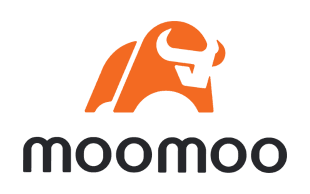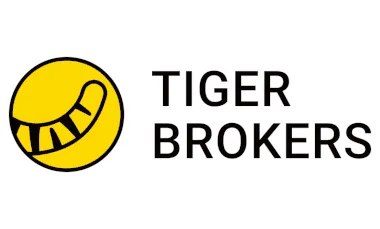Our top pick for
24/5 trading

Nasdaq Inc (NDAQ) is a leading financial data & stock exchanges business with stocks listed in the US. It closed the previous market day at US$78.42. During the previous open market day, the price has varied from a low of USD78.055 to a high of USD79.18. Nasdaq is listed on the NASDAQ. All prices are listed in US Dollars.
Our top pick for
24/5 trading

Our top pick for
Copy trading

Our top pick for
Mobile app

Nasdaq's shares were split on a 3:1 basis on 28 August 2022. So if you had owned 1 share the day before the split, the next day you would own 3 shares. This wouldn't directly have changed the overall worth of your Nasdaq shares – just the quantity. However, indirectly, the new 66.7% lower share price could have impacted the market appetite for Nasdaq shares which in turn could have impacted Nasdaq's share price.
| 52-week range | US$54.1356 - US$83.5226 |
|---|---|
| 50-day moving average | US$78.283 |
| 200-day moving average | US$68.0777 |
| Target price | US$84.1667 |
| PE ratio | 47.5422 |
| Dividend yield | US$0.92 (1.24%) |
| Earnings per share (TTM) | US$1.66 |
Use the fields above to explore the returns from a historical investment. Please refer to the charts further up this page to see performance over 5 years, or other periods. Past performance doesn't indicate future results. Capital is at risk.
Historical closes compared with the last close of $78.42
| 1 week (2024-12-20) | 0.93% |
|---|---|
| 1 month (2024-11-27) | -5.57% |
| 3 months (2024-09-27) | 8.02% |
| 6 months (2024-06-28) | 30.14% |
| 1 year (2023-12-28) | 34.65% |
|---|---|
| 2 years (2022-12-28) | 29.19% |
| 3 years (2021-12-28) | 12.17% |
| 5 years (2019-12-27) | 117.85% |
We currently don't have a partnership for that product, but we have other similar offers to choose from (how we picked these ):
The technical analysis gauge below displays real-time ratings for the timeframes you select. However, this is not a recommendation. It represents a technical analysis based on the most popular technical indicators: Moving Averages, Oscillators and Pivots. Finder might not concur and takes no responsibility.
Valuing Nasdaq stock is incredibly difficult, and any metric has to be viewed as part of a bigger picture of Nasdaq's overall performance. However, analysts commonly use some key metrics to help gauge the value of a stock.
Nasdaq's current share price divided by its per-share earnings (EPS) over a 12-month period gives a "trailing price/earnings ratio" of roughly 48x. In other words, Nasdaq shares trade at around 48x recent earnings.
That's relatively high compared to, say, the trailing 12-month P/E ratio for the NASDAQ 100 at the end of 2019 (27.29). The high P/E ratio could mean that investors are optimistic about the outlook for the shares or simply that they're over-valued.
Nasdaq's "price/earnings-to-growth ratio" can be calculated by dividing its P/E ratio by its growth – to give 4.2191. A low ratio can be interpreted as meaning the shares offer better value, while a higher ratio can be interpreted as meaning the shares offer worse value.
The PEG ratio provides a broader view than just the P/E ratio, as it gives more insight into Nasdaq's future profitability. By accounting for growth, it could also help you if you're comparing the share prices of multiple high-growth companies.
Nasdaq's EBITDA (earnings before interest, taxes, depreciation and amortisation) is US$2.5 billion (£2 billion).
The EBITDA is a measure of a Nasdaq's overall financial performance and is widely used to measure stock profitability.
Over the last 12 months, Nasdaq's shares have ranged in value from as little as US$54.1356 up to US$83.5226. A popular way to gauge a stock's volatility is its "beta".
Beta measures a share's volatility in relation to the market. The market (NASDAQ average) beta is 1, while Nasdaq's is 0.96. This would suggest that Nasdaq's shares are less volatile than average (for this exchange).
| Revenue TTM | US$7 billion |
|---|---|
| Operating margin TTM | 25.71% |
| Gross profit TTM | US$3.6 billion |
| Return on assets TTM | 4.39% |
| Return on equity TTM | 10.89% |
| Profit margin | 13.67% |
| Book value | 19.264 |
| Market capitalisation | US$45.4 billion |
| EBITDA | US$2.5 billion |
TTM: trailing 12 months
Dividend payout ratio: 33.81% of net profits
Recently Nasdaq has paid out, on average, around 33.81% of net profits as dividends. That has enabled analysts to estimate a "forward annual dividend yield" of 1.24% of the current stock value. This means that over a year, based on recent payouts (which are sadly no guarantee of future payouts), Nasdaq shareholders could enjoy a 1.24% return on their shares, in the form of dividend payments. In Nasdaq's case, that would currently equate to about $0.92 per share.
While Nasdaq's payout ratio might seem fairly standard, it's worth remembering that Nasdaq may be investing much of the rest of its net profits in future growth.
Nasdaq's most recent dividend payout was on 19 December 2024. The latest dividend was paid out to all shareholders who bought their shares by 5 December 2024 (the "ex-dividend date").
Environmental, social and governance (known as ESG) criteria are a set of three factors used to measure the sustainability and social impact of companies like Nasdaq.
When it comes to ESG scores, lower is better, and lower scores are generally associated with lower risk for would-be investors.
Total ESG risk: 16.08
Socially conscious investors use ESG scores to screen how an investment aligns with their worldview, and Nasdaq's overall score of 16.08 (as at 12/31/2018) is excellent – landing it in it in the 11st percentile of companies rated in the same sector.
ESG scores are increasingly used to estimate the level of risk a company like Nasdaq is exposed to within the areas of "environmental" (carbon footprint, resource use etc.), "social" (health and safety, human rights etc.), and "governance" (anti-corruption, tax transparency etc.).
Environmental score: 4.54/100
Nasdaq's environmental score of 4.54 puts it squarely in the 5th percentile of companies rated in the same sector. This could suggest that Nasdaq is a leader in its sector terms of its environmental impact, and exposed to a lower level of risk.
Social score: 10.23/100
Nasdaq's social score of 10.23 puts it squarely in the 5th percentile of companies rated in the same sector. This could suggest that Nasdaq is a leader in its sector when it comes to taking good care of its workforce and the communities it impacts.
Governance score: 11.31/100
Nasdaq's governance score puts it squarely in the 5th percentile of companies rated in the same sector. That could suggest that Nasdaq is a leader in its sector when it comes to responsible management and strategy, and exposed to a lower level of risk.
Controversy score: 2/5
ESG scores also evaluate any incidences of controversy that a company has been involved in. Nasdaq scored a 2 out of 5 for controversy – the second-highest score possible, reflecting that Nasdaq has, for the most part, managed to keep its nose clean.
Nasdaq Inc was last rated for ESG on: 2019-01-01.
| Total ESG score | 16.08 |
|---|---|
| Total ESG percentile | 10.96 |
| Environmental score | 4.54 |
| Environmental score percentile | 5 |
| Social score | 10.23 |
| Social score percentile | 5 |
| Governance score | 11.31 |
| Governance score percentile | 5 |
| Level of controversy | 2 |
Nasdaq, Inc. operates as a technology company that serves capital markets and other industries worldwide. It operates in three segments: Capital Access Platforms, Financial Technology, and Market Services. The Capital Access Platforms segment sells and distributes historical and real-time market data; and develops and licenses Nasdaq-branded indices and financial products. This segment also offers investor relations intelligence, governance solutions, and ESG solutions; and insights and workflow solutions, as well as operates listing platforms. The Financial Technology segment offers Verafin, a cloud-based platform to detect, investigate, and report money laundering and financial frauds; surveillance solutions, including a SaaS platform to assist in complying with market rules, regulations, and internal market surveillance policies; AxiomSL, a risk data management and regulatory reporting solution; and Calypso, a front-to-back trading technology solution for the financial market. This segment also handles assets, comprising cash equities, equity derivatives, currencies, various interest-bearing securities, commodities, energy products, and digital currencies; and trade management and colocation services. The Market Platforms segment offers equity derivative trading and clearing, cash equity trading, fixed income and commodities trading and clearing, and currency trading services. This segment operates various exchanges and other marketplace facilities across various asset classes which includes derivatives, commodities, cash equity, debt, structured products, and exchange traded products; and provides clearing, settlement, and central depository services. The company was formerly known as The NASDAQ OMX Group, Inc. and changed its name to Nasdaq, Inc. in September 2015. Nasdaq, Inc. was founded in 1971 and is headquartered in New York, New York.



Steps to owning and managing Blinklab shares.
What you need to know about investing in Shein from Australia.
Steps to owning and managing The Star Entertainment shares from in Australia.
Steps to owning and managing Exxon Mobil shares from in Australia.
Steps to owning and managing ConocoPhillips shares from in Australia.
Steps to owning and managing Verizon shares from in Australia.
Steps to owning and managing Wells Fargo shares from in Australia.
Steps to owning and managing Oracle shares from in Australia.
Steps to owning and managing JPMorgan Chase shares from in Australia.
Steps to owning and managing Starbucks shares from in Australia.